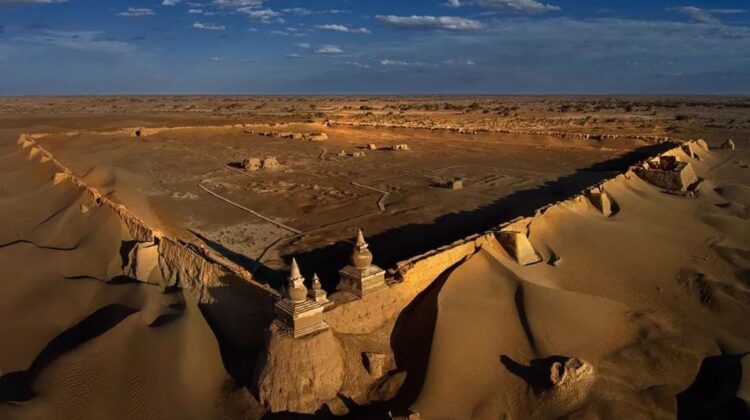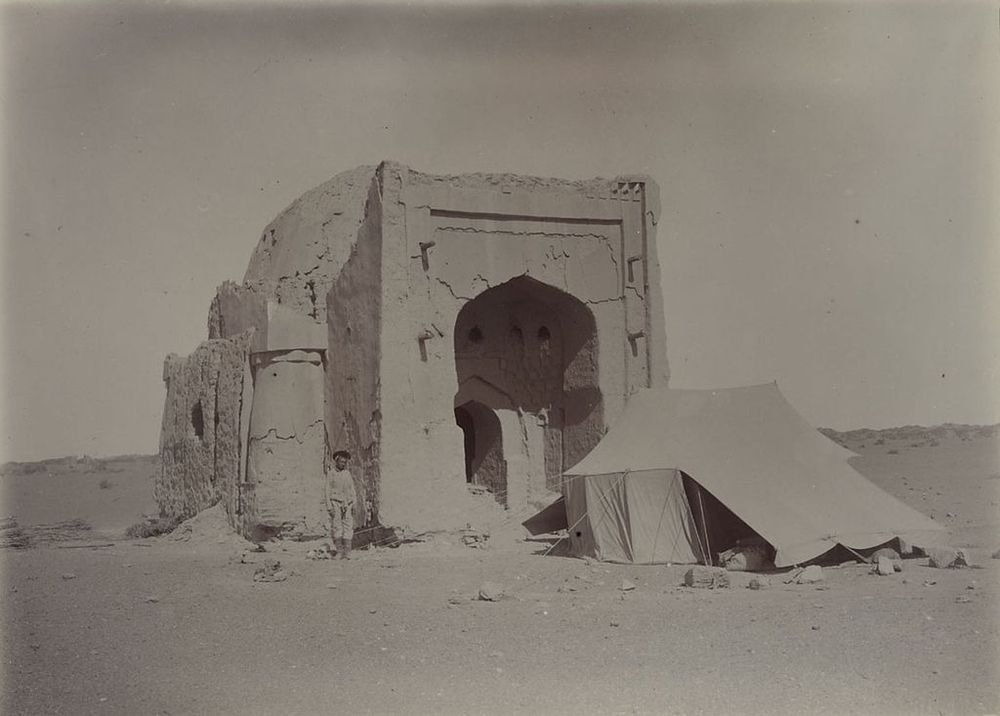
Khara-Khoto, also known as “black city,” was once a thriving trade hub and center of religious learning in the Gobi Desert. It was founded in 1032 AD as the capital of the Western Xia Dynasty and was captured by Genghis Khan in 1226. Under Mongol rule, the city expanded to three times its original size and enjoyed peaceful existence for nearly 150 years. However, the city fell to the Ming dynasty in 1372, and after the defeat, it was abandoned and fell into ruins.
The Legend of Khara Bator
Local legend states that during the siege of Khara-Khoto, a Mongol military general named Khara Bator became so crazed by the plight that he murdered his wife and children before committing suicide. There is another version of the rumor that holds that Khara Bator made a breach in the northwestern corner of the city wall and escaped through it.

Rediscovery of the Site
The site was rediscovered in the early 20th century by a Mongol-Sichuan expedition under the command of Russian explorer Pyotr Kuzmich Kozlov. During its initial excavation, the expedition uncovered over 2,000 books, scrolls, and manuscripts in the Tangut language. These treasures were sent back to St. Petersburg along with Buddhist statues, texts, and woodcuts that were found in a stupa outside of the city walls.

Excavation and Discoveries
Further excavation produced many thousand more manuscripts, books, as well as daily items, production instruments, and religious art. Many of these books and xylographs formed the basis for research of the Tangut language, written in Tangut script in subsequent years. The discoveries shed light on the rich history and culture of Khara-Khoto, which was home to people of different religions, including Muslims, who had a mosque just outside the city walls.

Current State of the Ruins
Today, all that remains of Khara-Khoto are 30-feet-tall ramparts, a few 40-feet high pagodas, and scattered mud buildings. The city’s only water source, the Ejin River, no longer flows just outside the fortress, and the city’s troops and inhabitants no longer face the life-giving elixir dilemma. The scattered sun-bleached bones are all that is left of the once-thriving city’s inhabitants.

The Significance of the Tangut Language
The discovery of the manuscripts in the Tangut language provided scholars with valuable insight into the culture and language of the Tangut people. The Tangut language, which was written in Tangut script, is an extinct language that was spoken in the Western Xia Dynasty. The language’s discovery and subsequent research have provided a valuable window into the history and culture of the dynasty.
The Influence of Marco Polo
Khara-Khoto was even mentioned by Marco Polo in his travelogue by its Tangut name of Etzina. Marco Polo’s travelogue was an influential work that introduced Europeans to the wonders of the East. The mention of Khara-Khoto in his travelogue serves as a testament to the city’s importance as a trading hub and center of religious learning.
The Importance of Preservation
The ruins of Khara-Khoto are a valuable piece of history that provides insight into the culture and history of the Western Xia Dynasty. The discoveries made during the initial excavation have had a significant impact on the study of the Tangut language and the culture of the Tangut people. It is important to preserve the ruins and artifacts to ensure that future generations can continue to learn from them and appreciate the rich history and culture of Khara-Khoto.
Conclusion
Khara-Khoto is a haunting reminder of a lost civilization, a once thriving city reduced to ruins in the unforgiving desert. Despite the passage of centuries, the ruins of Khara-Khoto continue to fascinate and intrigue visitors from around the world, drawn by the mysteries and legends that surround this enigmatic city. Although little remains of the city that was once a center of trade, art, and learning, the legacy of Khara-Khoto lives on through the artifacts and manuscripts that have been recovered from its ruins, providing insight into the language, culture, and daily life of the Tangut people who once called this place home. Today, the ruins of Khara-Khoto are a testament to the enduring resilience of the human spirit, and a reminder that even in the face of the most daunting challenges, people have the power to create, innovate, and build something beautiful that can stand the test of time.

Leave a Reply